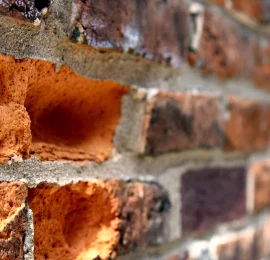Trustworthy Tuckpointing Services for Improving Block and Rock Surfaces
Trustworthy Tuckpointing Services for Improving Block and Rock Surfaces
Blog Article
Opening the Secrets of Sustainable Masonry Building Practices for Eco-Friendly Buildings
Amongst the myriad techniques to environment-friendly building, sustainable masonry construction stands out as a time-tested and resilient method that holds a wealth of untapped potential. From the option of materials to innovative building methods, the keys to attaining sustainability within masonry building and construction are multifaceted and appealing.
Advantages of Lasting Masonry Building And Construction
Accepting lasting masonry building and construction methods not only decreases environmental influence but also supplies long-term financial benefits to building contractors and areas. By utilizing materials like recycled blocks, blocks, and stones, building contractors can dramatically reduce the carbon footprint of their projects while promoting resource performance. In addition, lasting masonry building and construction methods, such as proper insulation and thermal mass residential or commercial properties, can improve energy performance within structures, bring about decreased operational costs with time.
Moreover, the longevity and strength of stonework structures add to lasting economic benefits. Buildings constructed utilizing sustainable stonework techniques typically call for less maintenance and fixing, translating to set you back savings for home builders and homeowner. The durability of stonework materials likewise ensures that structures continue to be stable and protected, reducing the demand for regular improvements or replacements.
Eco-Friendly Stonework Products
Making use of environment-friendly masonry materials is a critical action towards improving the sustainability of building methods and minimizing ecological impact while taking full advantage of lasting financial benefits. Lasting masonry products are sourced, generated, and made use of in a manner that lowers overall ecological influence. Sustainable concrete obstructs include recycled aggregates and might feature better insulation properties, contributing to energy effectiveness in buildings.
Moreover, natural materials like adobe, rammed planet, and straw bales supply excellent thermal mass residential properties, lowering the need for heating and cooling down power. These products are frequently in your area available, promoting regional economic climates and reducing transportation-related carbon exhausts. By picking environment-friendly masonry materials, building and construction projects can significantly reduce their environmental impact and add to the development of much healthier, much more sustainable constructed settings.
Energy-Efficient Stonework Strategies
Power effectiveness plays an essential duty in boosting the sustainability of stonework building methods. One key energy-efficient masonry strategy is the usage of thermal mass, which involves including dense materials like concrete or block right into the building's framework to take in and save warm.

Technologies in Sustainable Masonry
Current developments in sustainable masonry techniques have caused ingenious methods that are reshaping the building and construction sector. One such advancement is the advancement of self-healing concrete, which makes use of germs installed within the concrete to heal fractures autonomously. This breakthrough not only minimizes maintenance expenses but also enhances the longevity of stonework frameworks, adding to their sustainability.
An additional noteworthy advancement is using recycled accumulations in masonry construction - masonry contractor. By including materials such as smashed ceramic waste or recycled glass right into concrete blends, contractors can decrease the environmental impact of building projects while preserving structural integrity. This technique not just diverts waste from land fills yet also preserves natural deposits, making it a vital development in sustainable masonry construction
In addition, the assimilation of electronic layout devices, such as Building Info Modeling (BIM), is changing the way stonework frameworks are intended and constructed. BIM permits more accurate computations, lowered material wastefulness, and improved power efficiency, eventually bring about even more sustainable structure practices. These technologies collectively signify a promising future for sustainable stonework building and construction in the era of green structures.
Future Trends in Stonework Sustainability
With the cutting-edge strides made in lasting masonry methods, the future patterns in masonry sustainability are positioned to additional revolutionize the building and construction industry. One of the essential patterns shaping the future of stonework sustainability macmulkin corvette is the raised assimilation of mclaren dealership technology. Advancements such as Building Info Modeling (BIM) and online reality simulations are being used to enhance masonry construction processes, causing minimized material waste and enhanced power efficiency in buildings.
Furthermore, the growth of novel lasting materials is established to play a significant duty in improving the eco-friendliness of stonework building. masonry contractor. Advancements like self-healing concrete, recycled accumulations, and bio-based binders are gaining traction for their capability to reduce ecological effect while preserving architectural honesty

Final Thought
To conclude, sustainable masonry building techniques provide various benefits for environmentally friendly structures. By making use of environmentally friendly materials and energy-efficient methods, stonework can add to a much more lasting built setting. Advancements in lasting masonry are continually being established to better enhance the ecological performance of buildings. Looking towards the future, the fad of masonry sustainability is expected to expand, leading to even more eco-friendly and energy-efficient building and construction methods in the years ahead.
Report this page